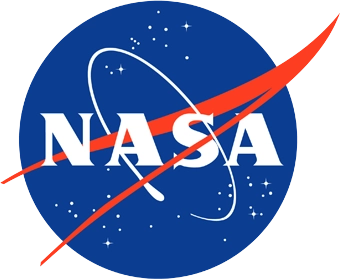Dr. Melissa Wrzesien is currently an Assistant Research Scientist in the Hydrological Sciences Lab at NASA Goddard Space Flight Center with the Earth System Science Interdisciplinary Center (ESSIC) at the University of Maryland. She works with the Land Information System (LIS) team. Melissa received her BS in Environmental Science and Applied Mathematics from the University of North Carolina in 2013. She completed her PhD in Earth Sciences from the Ohio State University in 2018. Melissa started at GSFC in 2020.
Melissa Wrzesien
(SCIENTIST)
| Email: | melissa.l.wrzesien@nasa.gov |
| Org Code: | 617 |
| Address: |
NASA/GSFC Mail Code 617 Greenbelt, MD 20771 |
| Employer: | UNIV OF MARYLAND COLLEGE PARK |
Brief Bio
Positions/Employment
Assistant Research Scientist
ESSIC/UMD, NASA GSFC Hydrological Sciences Lab - Greenbelt, MD
August 2021 - Present
Associate Scientist
GESTAR/USRA, NASA GSFC Hydrological Sciences Lab - Greenbelt, MD
March 2020 - July 2021
Postdoctoral Researcher
Global Hydrology Labratory, Department of Geological Sciences, University of North Carolina - Chapel Hill, NC
July 2018 - February 2020
Education
Ph.D. in Earth Sciences, Ohio State University, Columbus, OH, 2018
B.S. in Environmental Sciences and Applied Mathematics, University of North Carolina, Chapel Hill, NC, 2013
Publications
Refereed
2025. "Quantifying the Impacts of Dynamic Lapse Regimes on Snow Simulations over Complex Terrains." Journal of Hydrometeorology 26 (10): 1525–1560 [10.1175/jhm-d-25-0021.1] [Journal Article/Letter]
2024. "Nonstationarity in the global terrestrial water cycle and its interlinkages in the Anthropocene." Proceedings of the National Academy of Sciences 121 (45): [10.1073/pnas.2403707121] [Journal Article/Letter]
2024. "Extending the utility of space-borne snow water equivalent observations over vegetated areas with data assimilation." Hydrology and Earth System Sciences 28 (3): 631-648 [10.5194/hess-28-631-2024] [Journal Article/Letter]
2023. "Interconnected hydrologic extreme drivers and impacts depicted by remote sensing data assimilation." Scientific Reports 13 (1): 3411 [10.1038/s41598-023-30484-4] [Journal Article/Letter]
2022. "Precipitation biases and snow physics limitations drive the uncertainties in macroscale modeled snow water equivalent." Hydrology and Earth System Sciences 26 (22): 5721-5735 [10.5194/hess-26-5721-2022] [Journal Article/Letter]
2022. "Evaluating the Utility of Active Microwave Observations as a Snow Mission Concept Using Observing System Simulation Experiments." The Cryosphere Discussions [10.5194/tc-2022-220] [Journal Article/Letter]
2022. "Flash Drought Onset and Development Mechanisms Captured with Soil Moisture and Vegetation Data Assimilation." Water Resources Research 58 (12): e2022WR032894 [10.1029/2022wr032894] [Journal Article/Letter]
2022. "Development of a “nature run” for observing system simulation experiments (OSSEs) for snow mission development." Journal of Hydrometeorology [10.1175/jhm-d-21-0071.1] [Journal Article/Letter]
2021. "Snow Ensemble Uncertainty Project (SEUP): Quantification of snow water equivalent uncertainty across North America via ensemble land surface modeling." The Cryosphere 15 (2): 771-791 [10.5194/tc-15-771-2021] [Journal Article/Letter]
2020. "How much snow falls in the world's mountains? A first look at mountain snowfall estimates in A-train observations and reanalyses." The Cryosphere 14 (9): 3195-3207 [10.5194/tc-14-3195-2020] [Journal Article/Letter]
2020. "Tailoring WRF and Noah‐MP to Improve Process Representation of Sierra Nevada Runoff: Diagnostic Evaluation and Applications." Journal of Advances in Modeling Earth Systems 12 (3): [10.1029/2019ms001832] [Journal Article/Letter]
2020. "Projected Changes to Extreme Runoff and Precipitation Events From a Downscaled Simulation Over the Western United States." Frontiers in Earth Science 7 [10.3389/feart.2019.00355] [Journal Article/Letter]
2019. "Characterizing Biases in Mountain Snow Accumulation From Global Data Sets." Water Resources Research 55 (11): 9873-9891 [10.1029/2019wr025350] [Journal Article/Letter]
2019. "A Reassessment of North American River Basin Cool‐Season Precipitation: Developments From a New Mountain Climatology Data Set." Water Resources Research 55 (4): 3502-3519 [10.1029/2018wr024106] [Journal Article/Letter]
2018. "A New Estimate of North American Mountain Snow Accumulation From Regional Climate Model Simulations." Geophysical Research Letters 45 (3): 1423-1432 [10.1002/2017gl076664] [Journal Article/Letter]
2017. "How much runoff originates as snow in the western United States, and how will that change in the future?." Geophysical Research Letters 44 (12): 6163-6172 [10.1002/2017gl073551] [Journal Article/Letter]
2017. "Comparison of Methods to Estimate Snow Water Equivalent at the Mountain Range Scale: A Case Study of the California Sierra Nevada." Journal of Hydrometeorology 18 (4): 1101-1119 [10.1175/jhm-d-16-0246.1] [Journal Article/Letter]
2015. "Cool-Season Precipitation Patterns Associated with Teleconnection Interactions in the United States." Journal of Applied Meteorology and Climatology 54 (2): 494-505 [10.1175/jamc-d-14-0040.1] [Journal Article/Letter]
2014. "Evaluation of snow cover fraction for regional climate simulations in the Sierra Nevada." International Journal of Climatology 35 (9): 2472-2484 [10.1002/joc.4136] [Journal Article/Letter]
